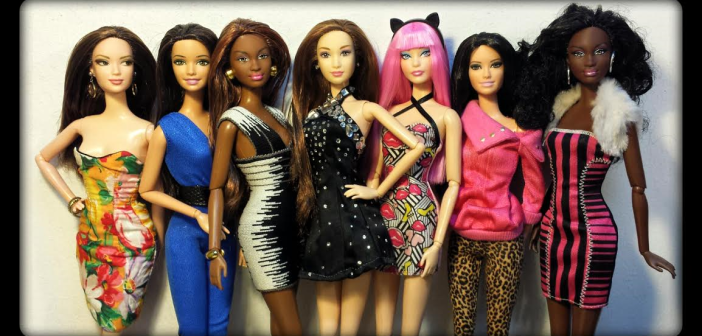“Imagination comes in all shapes and sizes.” This is the campaign statement made for the new generation of the Barbie doll.
In the 1960s the first Barbie was released wearing a zebra-striped swimsuit and the signature topknot ponytail. It came with either blonde or brunette hair and sold 300,000 dolls in the first year. The doll became an icon – a must-have toy for all girls around the world.
Since then the Mattel toy company has made it their mission to keep Barbie relevant and fresh in order to “escape the pink box,” said Time magazine reporter Mona Awad. Three new Barbies were announced earlier this year in hopes of expanding on body sizes. There will be Petite Barbie, Tall Barbie and Curvy Barbie. This is the first time Barbie is available in more than one size. Another talked-about topic about the doll is to also create more ethnic backgrounds like African American, Asian and Latino.
These new body types are inclusive of many different girls and shows girls that there is more than one body type. Each body type features different skin tones, hair color and style, all while keeping true to who Barbie is.
But why should there be any racial or self-image changes in Barbie? The target market for these dolls is for young girls who are far beyond their puberty years. They should not be taught already about slaving away to have Barbie’s body or Barbie’s hair.
After making the cover recently on Time magazine, Mattel really wants to know if they have done enough to get the attention of mothers and girls who have grown up with Barbie in the past.
“When girls who identify with those body types see a doll with that certain body type, they’ll recognize that their bodies are also completely deserving of attention and worth and also that all bodies are beautiful,” said freshman Caitlin O’Brien.
In addition to the launch of these new dolls, a new era of advertising Barbie is underway too. But this isn’t the first time Mattel has jumped huge hurdles. In 2015, the first ad starring a boy was aired. The 2015 Moschino Barbie ad featured a young boy playing with the doll.
“When Mattel uses only girls it is stereotyping,” said senior Kailey Robbins. “It is important to keep in mind that both boys and girls can play with Barbies, so including a boy in their ad is targeting multiple audiences.”
Mattel seems to finally be ahead of their game of expanding the Barbie dolls. Many celebrities have been featured as Barbies such as Justin Bieber; Cher; Audrey Hepburn; Tim McGraw and Faith Hill; and the cast of ABC’s Once Upon A Time. They’ve even made Barbies look pregnant. Children may reach early adaptations of cultural diversity and pop culture toys if this new expansion of Barbie succeeds.

